The city was founded in 1529 by a group of Zapotec Indians and is recognized as a UNESCO heritage site and is filled with many historic buildings as well as colorful street scapes…
Teatro built in the 1900s
The Santo Domingo Temple opened in 1794
One of the buildings surrounding the Zolaco which is the main square of the city.
We did a lot of walking up and down as the city has many hills…
Some of the colorful street scapes…
The city also has much street art which we wish we had more time to explore…
Much of the art is also very political in nature including this piece which recognizes 43 missing indigenous students who disappeared on the way to a protest. They were murdered and a number of their bodies were later discovered.
We often commented on how clean the streets were but noticed there was a lot of graffiti which was also often making political statements, particularly on the role of women in Mexican society.
The city has many squares and parks where people love to gather…
Another feature of the city are the many mercardos that are always such interesting places to visit…
Don trying one of the local snacks called champolines which are roasted grasshoppers…very salty and crunchy
Lots of fruits and vegetables…
Chilies are an important part of the diet here and there are many varieties…
Oaxaca is known for its’ moles and is famous for 7 different kinds, we tried a few and they were all delicious! I first thought the base was beans but I was wrong…
We decided to eat lunch at the market…looked around for the busiest place and had a great meal…
Don loved his soup with chicken, cheese, vegetables and pork rinds…
Oaxaca is known for its’ gastronomic scene with many fine restaurants though we had difficulty getting reservations as there are so many visitors here. This was one of my favourite meals called Aquachile..
The streets of Oaxaca are very colorful in many ways…
There are many tall fiqures all over the city. This picture was taken from the top of a tour bus so you can see how tall they are.
Sculptures on the streets
Many stores featuring colorful tapestries…
There are many art galleries featuring this type of art called Alebrijes which are Oaxacan wood carvings, traditionally made with wood from the copal tree. They are painted using small dots and are often in the shape of spirit animals…
Lots of beautiful little alley ways…
Large ceramic jaguar heads…
Colourful streamers in restaurants and on the streets…
I think the various colours represent different seasons and they are putting up the purple ones in anticipation of Easter…
One day we did a 12 hour tour out of the city and into the valley and surrounding mountains. Beautiful scenery on our drive with many small farms in the valley…
It was a busy day visiting some of the highlights of the area starting with Hierve el Agua which has been in the making for thousands of years – formed from the runoff of the carbonated springs at the top of the towering cliffs. The carbonated water from the springs running off the cliff slowly calcified, creating the fantastic petrified waterfall effect.
Then there are pools which are fed from the underground springs…
Experts believe Hierve el Agua was likely a sacred site for the Zapotec people who inhabited the area. The natural springs contrast sharply with the otherwise dry arid landscape, and archeologists have discovered that a complex irrigation system was built around 2,500 years ago. Using a series of canals around the main amphitheater of Hierve el Agua, the Indigenous people were able to funnel the spring water so that they could use it for agriculture.
This site is located high in the mountains so it is not only a good place for a swim but also for the beautiful scenery.
Another stop was the Village of Teotitlan which is one of Oaxaca's dozens of artisan villages, which specializes in a special craft. Famous for its textile history that traces back thousands of years, most families living in Teotitlán are master weavers.
Don being a volunteer showing how to mix the dyes using ingredients such as limestone and berries.
Demonstration of the weaving…a long process to complete a rug. Many beautiful rugs but I resisted and left empty handed.
The Oaxaca Valley is also rich with many archaeological sites with some more developed than others…
Driving along the highway the guide pointed out these caves where people lived thousands of years ago…
We also visited the site at Mital… Mital is one of many well-preserved archeological sites in the Oaxaca Valley with which the cold, dry climate has conserved sites as old as 10,000 years. This valley was settled by the Zapotec before the turn of the first millennium, who over the centuries developed a hierarchical society governed by elites. While the valley was relatively isolated, the Zapotec did have contacts with other Mesoamerican peoples. This has been demonstrated by cultural, pottery and other influences that flowed back and forth between other peoples.
Mitla was a religious center, run almost entirely by priests who spent most of their time undertaking human sacrifices; often by removing a live heart from the person being sacrificed, and depositing it in a pit of fire as an offering to the gods.
Mitla is unique among the archeological sites because of its elaborate and intricate mosaic fretwork and geometric designs that cover tombs, panels, freizes, and even entire walls of the complex. These mosaics are made with small, finely cut and polished stone pieces that have been fitted together without the use of mortar. No other site in Mexico has this decorative work.
In 1553 after the Spanish colonization the site was mostly demolished and the material was used to build a Cathedral on top of the ruins. The church can be seen in this picture.
Oaxaca is known for many things including the production of Mexcal…
Mezcal is a traditional iconic Mexican distilled beverage obtained from varied species of agaves. Regardless of the area of production, the process always consists of five stage. harvesting the agaves, cooking, crushing, fermentation and distillation. We got to see all the stages and here they still use donkeys and horses to do the crushing…
And of course the last stage in the process is tasting…
Our final stop on the way back to the city was a visit the widest tree in the world which is located in a beautiful little town…
The tree is located in a lovely courtyard near the church and dwarfs the town’s church. It is more than 2000 years old and has a circumference of 54 meters (164 ft.)…the largest girth of any tree on the planet.
So many interesting places to explore in the city and the surrounding area and we throughly enjoyed our time here, and we would definitely recommend a visit here.






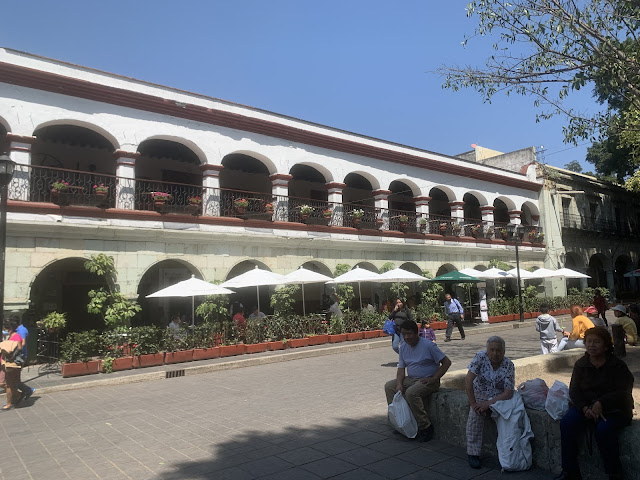






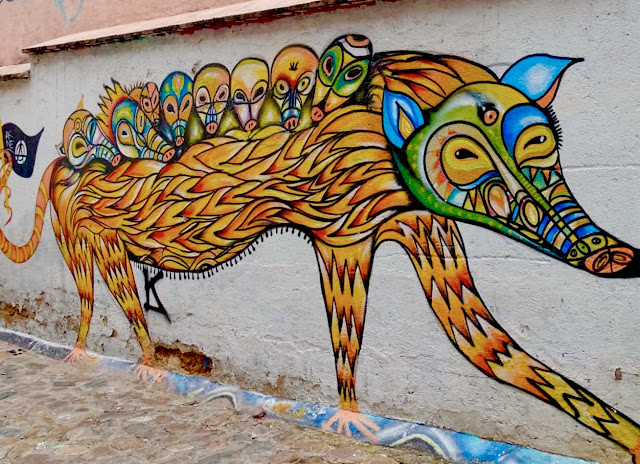






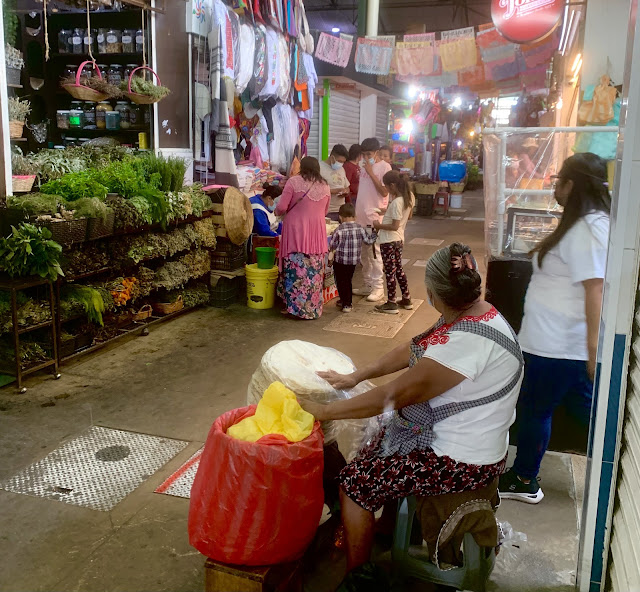

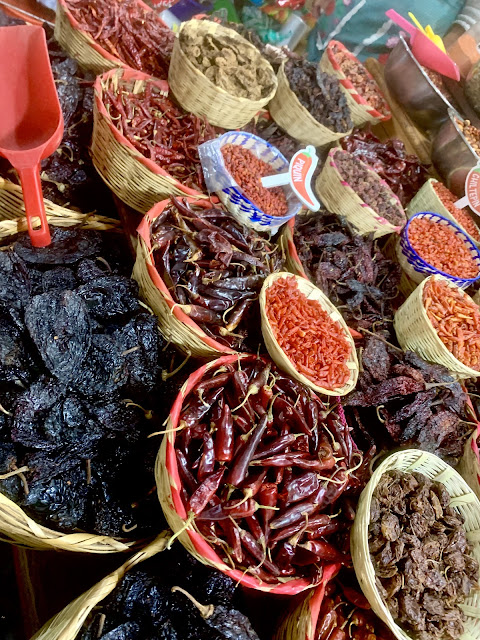













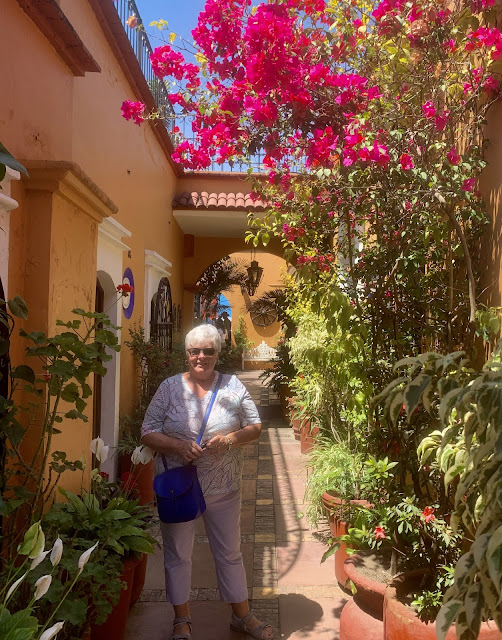

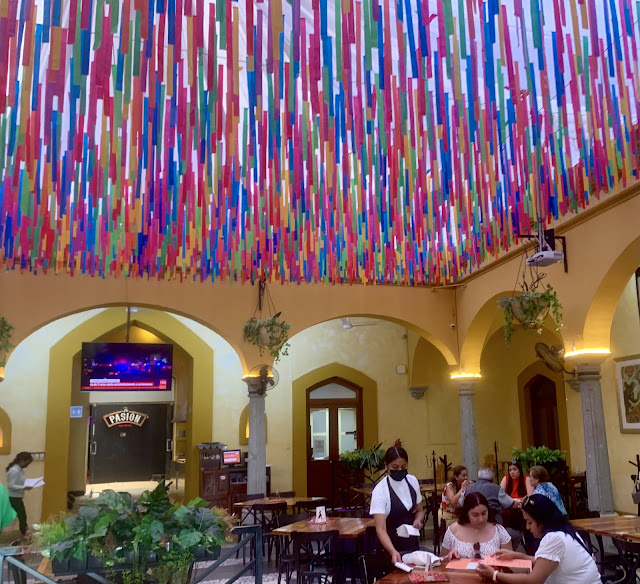








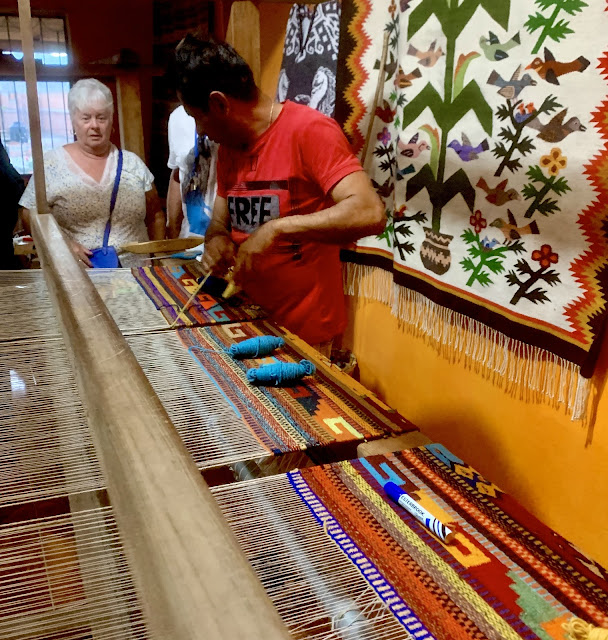









Wonderful blog! Makes me want to visit!
ReplyDeleteIt is a wonderful country in many ways!
DeleteLove your blog. Lots of interesting stuff that I never knew.
ReplyDeleteAlways something new to learn
DeleteAustin
ReplyDeleteHope you enjoyed the blog!
DeleteSo good to read your blog!! The Colors are so striking!! Great information Debbie!! Sandra
ReplyDeleteThanks Sandra! Mexico is so full of colour!
DeleteWhat an interesting place. Beautiful
ReplyDelete